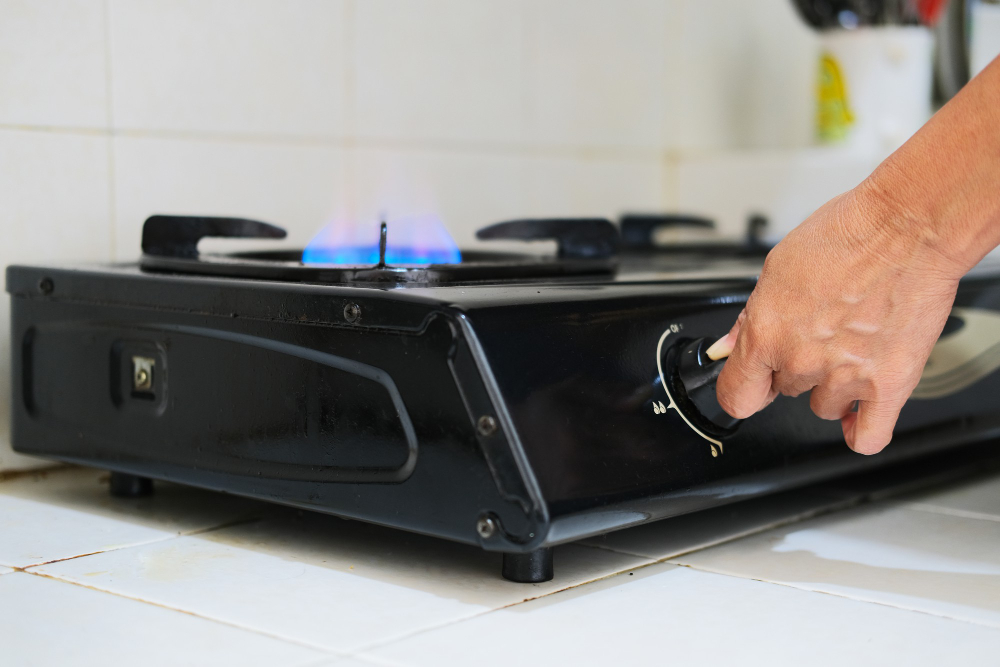As we ignite a gas stove, a sophisticated array of components collaborate to generate a stable, dependable flame for cooking. In this feature, we’ll demystify the fascinating mechanics of gas stove igniters and their role in delivering a consistent flame each time you whip up a meal. Furthermore, we’ll compare gas and electric stoves, and dive into the proper methods for their safe operation. Learn more about the hidden costs and igniter issues in our in-depth exploration.
The Ignition System in Gas Stoves: Understanding the Components
The ignition system in gas stoves is made up of several key components, including the igniter, spark module, and control switch. The igniter is responsible for creating the spark that ignites the gas, while the spark module and control switch help regulate the voltage and control the flow of gas to the burner.
There are two main types of ignition systems found in gas stoves: piezoelectric and electronic ignition systems. Piezoelectric systems generate an electric charge when a small crystal is struck, while electronic ignition systems use an electric current to create the spark.
The Role of Each Component
Each component in the ignition system plays a crucial role in ensuring the gas stove functions properly. The igniter creates the initial spark, which is then amplified by the spark module. This high voltage spark is sent to the burner via the control switch, igniting the gas and creating a flame.
Turning On a Gas Stove: The Process of Igniting a Gas Stove
To turn on a gas stove, follow these steps:
- Ensure all burner knobs are in the “Off” position.
- Turn the gas valve to the “On” position.
- Push in and turn the burner knob to the “Ignite” position.
- Listen for the clicking sound of the igniter, indicating that the ignition system in the gas stove is working.
- Once the burner ignites, adjust the flame to your desired setting.
Operating a Gas Stove Safely
Safety should always be a top priority when using a gas stove. Ensure that the area around the stove is clear of flammable materials and that the stove is properly vented. If you smell gas or the burner fails to ignite, turn off the stove immediately and call a professional for assistance. For more tips on gas stove safety and maintenance, check out these lesser-known tips and tricks.
Stove Burner Sparking: The Science Behind the Spark
Stove burner sparking occurs when the ignition system generates a high voltage spark, which is then transferred to the burner via the spark electrode. This spark ignites the gas, creating a controlled flame for cooking.
The spark electrode is a small, insulated component that is placed near the burner. When the voltage from the spark module is high enough, the electrical energy jumps from the electrode to the nearest grounded surface (in this case, the burner), creating the spark that ignites the gas.
Consistency and Control
The ignition system in a gas stove is designed to create a consistent and controlled spark, ensuring that the gas ignites reliably every time the stove is turned on. This consistency is achieved by carefully regulating the voltage produced by the spark module and the distance between the spark electrode and the burner.
Electric Stove Sparking: Comparing Gas and Electric Stoves
While both gas and electric stoves use a sparking mechanism to create heat, there are some notable differences between the two. In a gas stove, the ignition system in gas stoves generates a spark that ignites the gas, creating a flame for cooking. In contrast, an electric stove sparking occurs when an electric current passes through a coil or heating element, generating heat directly.
Key Differences and Similarities
One major difference between gas and electric stoves is the way heat is produced. As mentioned earlier, gas stoves use a flame, while electric stoves rely on heated coils or elements. This difference in heat source can affect cooking times and heat distribution.
Another difference is the level of control over the cooking temperature. Gas stoves generally offer more precise temperature control, while electric stoves can take longer to heat up and cool down.
On the other hand, both gas and electric stoves require a reliable ignition or sparking system to function correctly. This shared feature emphasizes the importance of understanding the underlying technology behind both types of stoves.
Choosing the Right Stove for Your Needs
When deciding between a gas or electric stove, consider factors such as your budget, available utilities, and personal cooking preferences. Both types of stoves have their advantages and disadvantages, so it is crucial to weigh these factors carefully before making a decision.
Conclusion
Understanding the science behind gas stove igniters and sparking mechanisms is essential for safe and efficient cooking. By delving into the components and processes involved in stove burner sparking and turning on a gas stove, we can appreciate the technology that allows us to cook our favorite meals reliably.
Additionally, comparing the sparking mechanisms in gas and electric stoves can help potential buyers make informed decisions when purchasing a new stove. Finally, always prioritize safety when operating any appliance, and do not hesitate to consult a professional for assistance in case of any issues. For more information on troubleshooting common gas stove igniter problems, refer to this helpful guide on troubleshooting a gas stove igniter.
We hope you found this exploration of gas stove igniters and sparking mechanisms both informative and engaging. Share your newfound knowledge with others and continue to explore the fascinating world of technology and science that surrounds our everyday lives.

